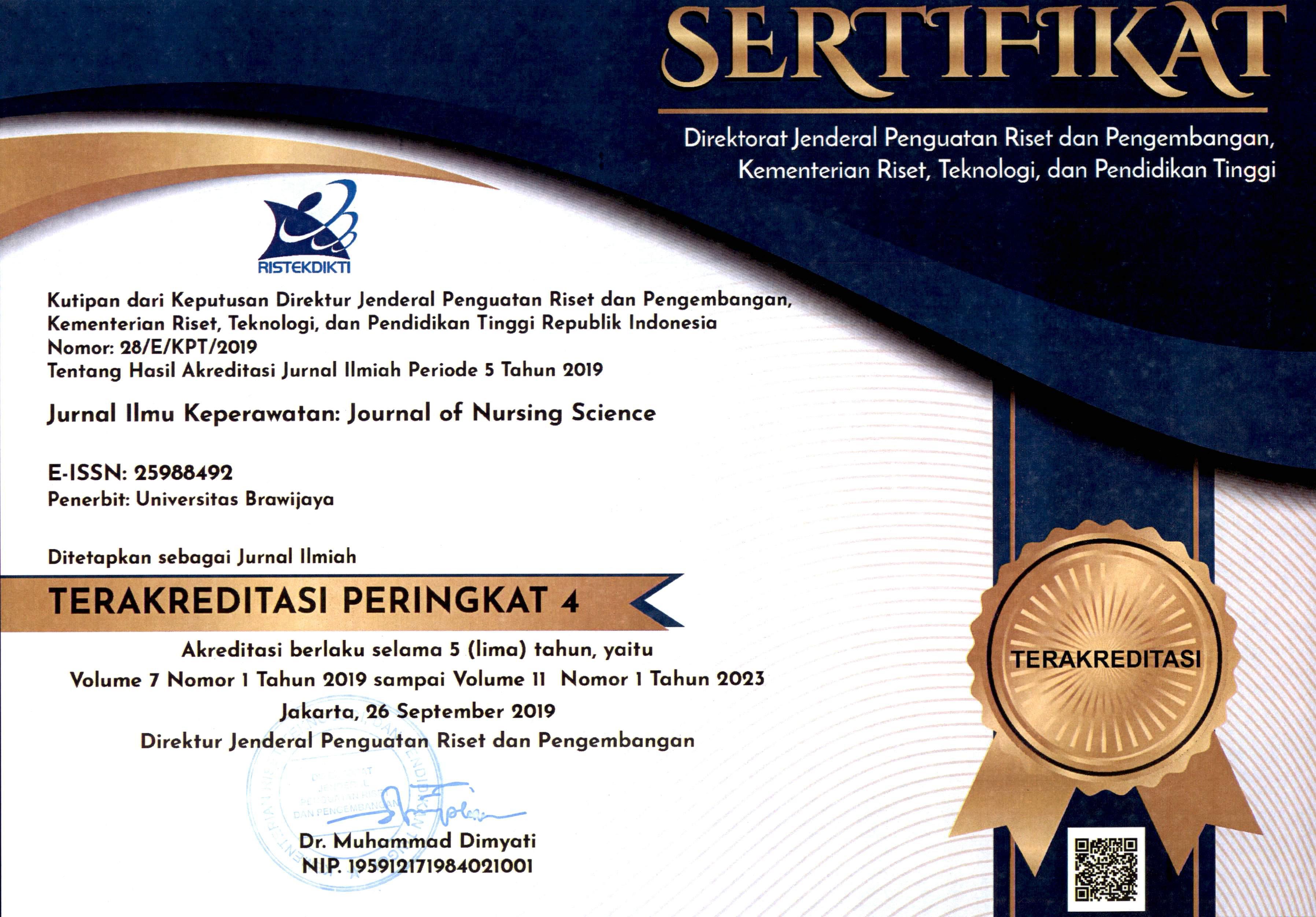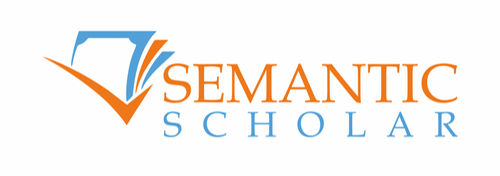Effectiveness of Thermos to Maintain the Temperature of Ringer Lactate and Normal Saline 0.9% at AC Temperature 18ËšC
DOI:
https://doi.org/10.21776/ub.jik.2021.009.02.8Keywords:
Crystalloid fluids, Flask, Hemorrhagic shock, TemperatureAbstract
References
- Campbell, J E, & Alson, RL. (2016). International Trauma Life Support for Emergency Care Providers, 8th edition, USA: Pearson Education.
- Gibson, J. L., & Nesbitt, I. D. (2016). Fluid management. 34, 60–65. https://doi.org/10.1016/j.mpsur.2015.11.010.
- Harahap, A. M., Kadarsah, R. K., & Oktaliansah, E. (2014). Angka Kejadian Hipotermia dan Lama Perawatan di Ruang Pemulihan pada Pasien Geriatri Pascaoperasi Elektif Bulan Oktober 2011–Maret 2012 di Rumah Sakit Dr. Hasan Sadikin Bandung. Jurnal Anestesi Perioperatif, 2(1), 36–44.
- Haynes, William M., ed. (2011). CRC Handbook of Chemistry and Physics (edisi ke-92nd). Hoboken: CRC Press.
- Hildebrand, F., Radermarcher, P., Rucholtz, S. (2014). Relevance Of Induced and Accidental Hypothermia After Trauma Haemorrhage What Do We Know From Experimental Models In Pigs? Journal Of Intensive Care Medicine, 1-2
- Khikmah, N. (2015). Pengaruh Konsentrasi NaOH dan Laju Alir pada Penentuan Kreatinin Dalam Urin Secara Sequential Injection Analysis. Kimia Student Journal. Vol.1 (1) : 613-615.
- Manifold C., & Abraham, H. (2018). Shock: Pathophysiology of Life and Death. In: NAEMT, McSwain N, Salomone J, editors. PHTLS: Prehospital Trauma Life Support. 9th ed. ‎Burlington: Jones & Bartlett Learning.
- Medecilo, J., G., G. (2018). Bamboo Thermos: Rice Husk and Bamboo as An Alternative Material. Pdfcoffee.Com. Retrieved November 30, 2020, from https://pdfcoffee.com/bamboo-thermos-rice-husk-and-bamboo-as-an-alternative-material-pdf-free.html.
- Nayoko. (2016). Perbandingan Efektifitas Pemberian Cairan Infus Hangat Terhadap Kejadian Menggigil Pada Pasien Sectio Caesaria Di Kamar Operasi. Jurnal Keperawatan Muhammadiyah, 1 (1), 86-92
- Putri, L. M. A., Prihandono, T., Supriadi, B. (2017). Pengaruh Konsentrasi Larutan Terhadap Laju Kenaikan Suhu Larutan, Program Studi Pendidikan Fisika FKIP Universitas Jember, Jurnal Pembelajaran Fisika, 6(2), 147- 153.
- Kemenkes RI. (2018). Hasil Riset Kesehatan Dasar. Jakarta: Kemenkes RI.
- Setyowati, Y., Novitasari, O. T., Febriani, R. F., & Ulya, A. Q. (2017). Termodinamika Pada Termos, Fakultas Pendidikan Matematika, Ilmu Pengetahuan Alam Dan Teknologi Informasi, Semarang: Universitas PGRI.
- Steward, R. M. (2018). Advance Trauma Life Support. USA: The Committee on Trauma.
Downloads
Published
How to Cite
License
Authors published in this journal agree to the following terms:
1. The copyright of the received article shall be assigned to the journal as the publisher of the journal. The intended copyright includes the right to publish the article in various forms (including reprints). The journal maintains the publishing rights to the published articles.
2. Authors may enter into separate additional contractual agreements for the non-exclusive distribution of the published journal version of the work (for example, posting it to an institutional repository or publishing it in a book), with acknowledgment of their initial publication in this journal.
3. Authors are permitted and encouraged to post their work online (e.g. in an Institutional Repository or on their website) before and during the submission process, as this can result in a productive exchange, as well as earlier and larger citations of the published work.
4. Articles and all related material published are distributed under Creative Commons Attribution-NonCommercial 4.0 International License or CC BY-NC 4.0 license.
JNSU is licensed under a Creative Commons Attribution-NonCommercial 4.0 International License or CC BY-NC 4.0 license.
Most read articles by the same author(s)
- Laila Agustina, Abdurahman Wahid, Ifa Hafifah, ANALYSIS OF THE EFFECTIVENESS OF NATIONAL EARLY WARNING SCORE (NEWS) USAGE ON THE OUTCOMES OF HEAD INJURY , Journal of Nursing Science Update (JNSU): Vol. 6 No. 2 (2018)
- Iseu Mapagresuka, Abdurahman Wahid, Ifa Hafifah, COMPARISON OF NATIONAL EARLY WARNING SCORE (NEWS) AND REVISED TRAUMA SCORE (RTS) IN THE OUTCOME PREDICTION OF HEAD INJURY PATIENTS , Journal of Nursing Science Update (JNSU): Vol. 7 No. 2 (2019)
- Ahmad Lathif, Abdurahman Wahid, Ifa Hafifah, THE INFLUENCE OF CPR MEASURES TRAINING TOWARD KNOWLEDGE AND MOTIVATION TO HELP THE VICTIM OF CARDIAC ARREST IN HIGH SCHOOL STUDENT OF DARUL HIJRAH PUTERA ISLAMIC BOARDING SCHOOL , Journal of Nursing Science Update (JNSU): Vol. 6 No. 2 (2018)
- Ninda Saputri, Abdurrahman Wahid, Tina Handayani Nasution, Gia Eka Negara, Thermos Ability in Maintaining Crystalloid Liquid Temperature (Ringer’s Lactate and Normal Saline 0,9%): an Alternative in Maintaining Resuscitation Fluid Temperature , Journal of Nursing Science Update (JNSU): Vol. 9 No. 2 (2021)
- Helna Fitriana, Abdurrahman Wahid, Tina Handayani Nasution, Gia Eka Negara, Effect of Woolen Cloth to Maintain Temperature 39°C of Crystaloid Fluid Ringer Lactate at Room Temperature 18°C , Journal of Nursing Science Update (JNSU): Vol. 9 No. 1 (2021)






























